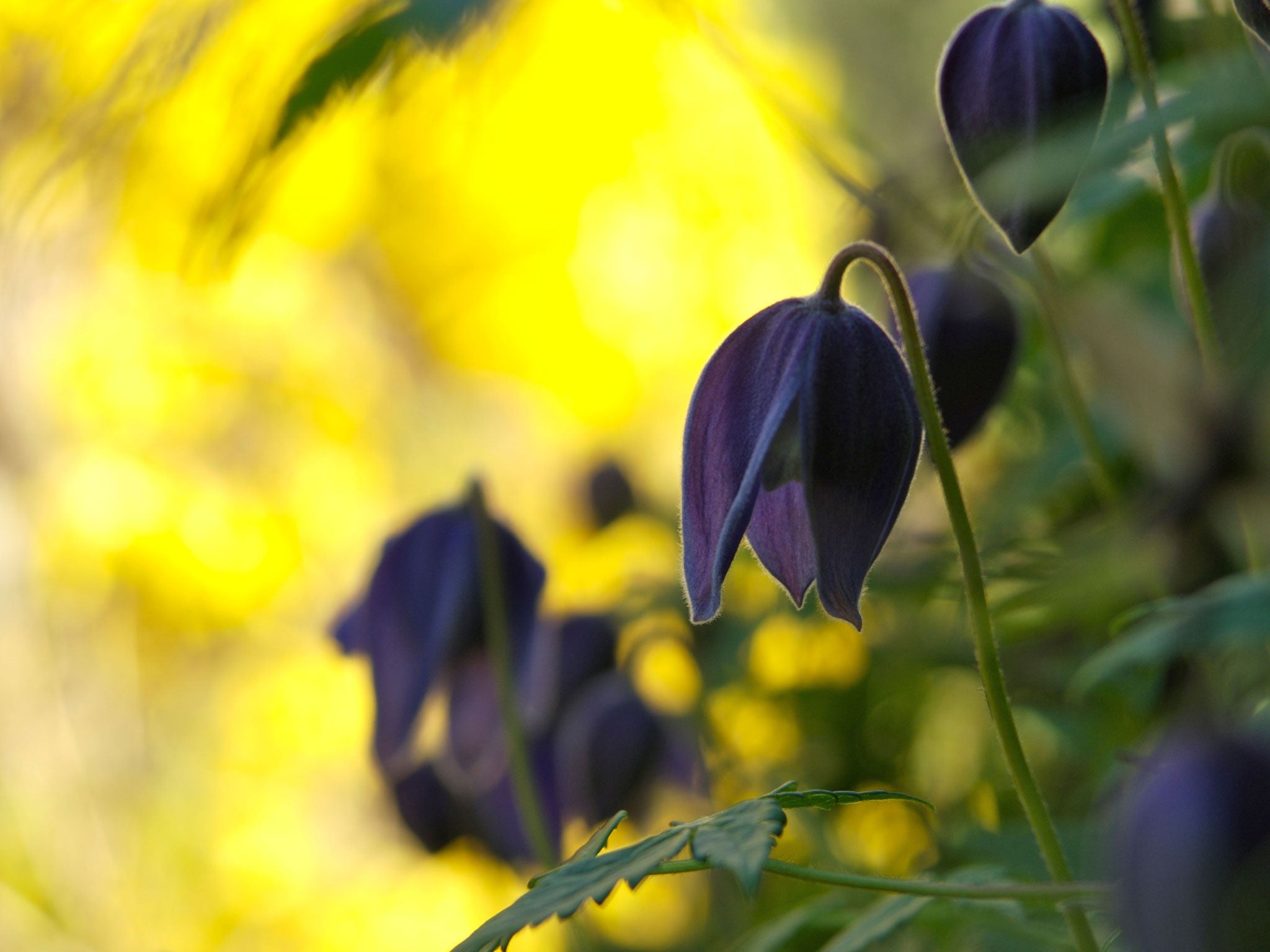Anna Pavord: Avoid flower-centric short-termism when planting this spring
One of the most vital things gardening can teach us is to think long term, says our gardening correspondent

Soon it will be all doing in the garden, with little time to think about it dispassionately. Grab this chance to review some of the ideas you had last season, remember some mistakes not to make again, consider where the gaps are and what you might do about them.
Above all, ask yourself whether the garden feels comfortably furnished, with no awkward blanks. Plants, like furniture, can be divided into basics and extras. A garden needs its equivalent of bed, table and chairs, before you start worrying about the minutiae of pelmets and doorknobs.
If you've taken over a garden that's already established, you may already have some of the basics: a forsythia perhaps, a lilac, or an overgrown buddleia. Don't be too quick to condemn plants just because you did not choose or plant them. They will perhaps need pruning. They will almost certainly need feeding. But the fact that you did not put them in their places is not, on its own, a good enough reason for taking them to the tip.
There is always a great rush to nurseries and garden centres as Easter approaches and it is tempting to pick up only stuff that is already in flower. But it's only fair to consider the plant's requirements as well as your own. Rhododendrons look fabulously glamorous, flowering now in pots, ready to go. But it's hopeless to plant them in lime-ridden soil. Don't believe all that stuff about excavating a pit and filling it with the "right" kind of soil. It'll work in the short term. But one of the most vital things gardening can teach us is to think long term. Leave that rhody where it is, unless you have the peaty, leaf-mouldy kind of soil it deserves.
You need also to think beyond the now. Don't just stick to plants that do their stuff in spring. Good gardens always have in them something to look forward to. And, anyway, shrubs already flowering in their pots are not the easiest things to establish in a garden. A plant finds it easier to settle the important stuff underground if is not at the same time trying to sustain a display above ground.
Pick out plants for their general shapeliness and when you are choosing, keep in mind some idea of balance: balance between evergreens and deciduous plants, between things that have their heads in the clouds and those that sprawl around at ground level. Think about the form and texture of the leaves on the plants you see. Flowers may arouse the greatest passions, but foliage is more sustaining.
It's perfectly possible to make a garden from nothing but annuals grown from seed. It will be jolly, but impermanent. Annuals, perennials and bulbs all have a part to play in a well-furnished garden, filling the bottom layer of a three-tier planting scheme, building up contrasts of colour around the more solid furniture of shrubs. But the shrubs need to be there first.
The showiest shrubs are not necessarily the best for basic furniture. Forsythia is a brilliant, cheerful sight in spring, but its leaves are coarse and uninteresting and it has little shape or form. The smaller the garden, the more critical you need to be of everything in it. Plants need to pay rent for more than their brief flowering season.
So the forsythia may be a candidate for the tip. But you could, instead, think of it as a prop for a scrambler such as a clematis or a seed-raised morning glory. I adore morning glories (Ipomoea tricolor) and you can scarcely do better than the classic "Heavenly Blue" (Chiltern Seeds £1.85). Don't be in too much of a hurry to start off the seeds. Early or mid-May is soon enough. Seedlings turn yellow and die if they are set out before the ground is warm enough for them. Bring them on inside and give the stems some sticks to twine around while they are waiting. Given sun, they will romp away outside and can transform a dingy hulk like a forsythia. Flowering will go on until the first frost.
At least one evergreen shrub in a collection is useful and the dark-leaved Osmanthus x burkwoodii is the equivalent of the good suit that fashion editors urge as an indispensable feature of everyone's wardrobe. At first sight, there seems little to it, but it enhances any garden and gives it dignity. Its neat evergreen leaves make an excellent backdrop for bulbs and perennials and its own white spring flowers are richly scented. It is slow-growing, but eventually reaches eight-foot tall. You will never regret the purchase.
Subscribe to Independent Premium to bookmark this article
Want to bookmark your favourite articles and stories to read or reference later? Start your Independent Premium subscription today.

Join our commenting forum
Join thought-provoking conversations, follow other Independent readers and see their replies